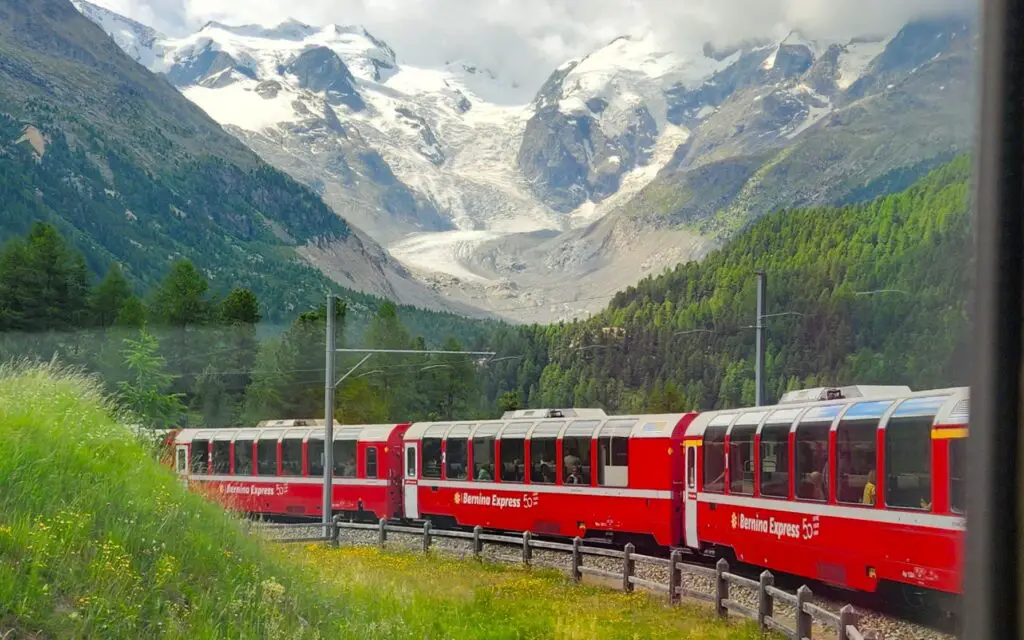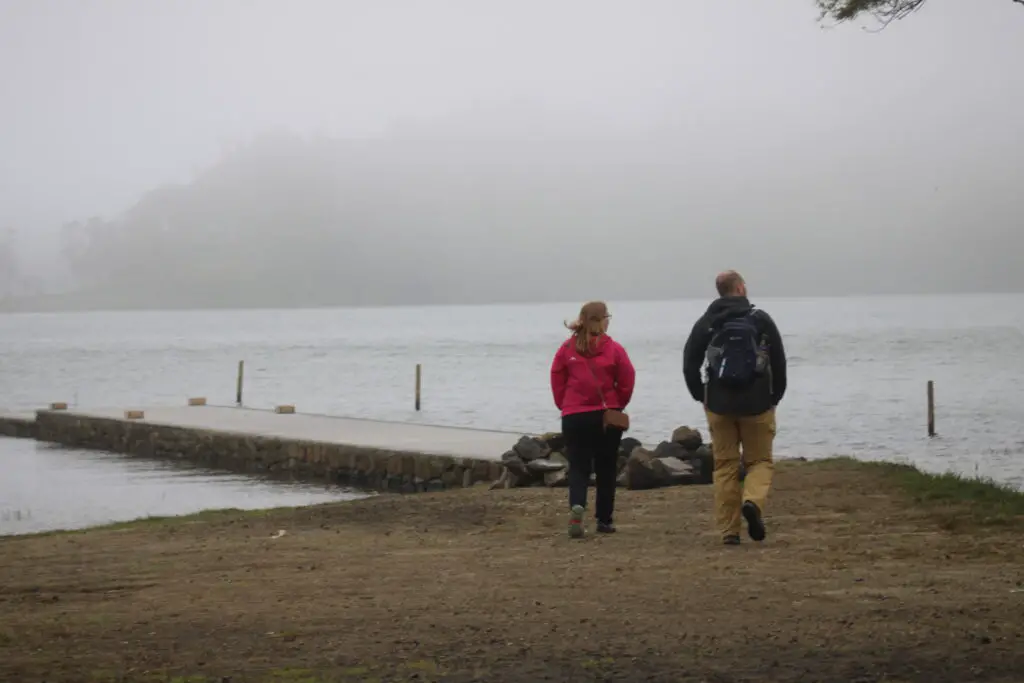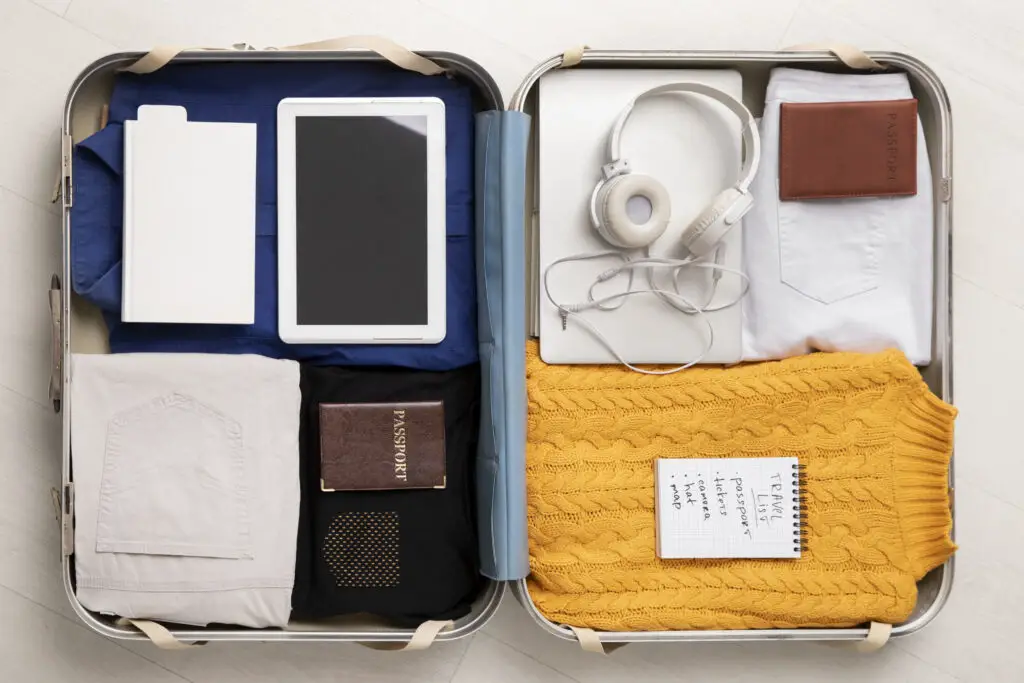A vlogger I follow recently stated that travel is broken. What he meant by that is that due to a misrepresentation on Social Media, people increasingly get the impression that traveling the world solely is about staying at five star hotels, lazing by the pool and sipping exotic cocktails.
Now, don’t get me wrong – everyone should choose the travel style they enjoy the most, but the luxury version will likely be unattainable for a lot of people and if that’s the only idea folks have about traveling the world, than it’s no wonder people think traveling is purely for the ultra rich.
I’m getting questions how I can afford to travel so much increasingly often, and I think it boils down less to a lack of creativity in getting around cheaply, but rather to a wrong idea of what travel is all about.
Thus, I decided to compile a few of my cheap travel strategies and at the same time I’ll try and explain how they can actually add value to your travels, instead of taking away from them.
Sights: Don’t Miss Out on Experiences
The most important thing to state is that I usually try not to skim on experiences. Yes, entrance fees can quickly add up, but by keeping all my other expenses low, I’m usually able to check out all the sights I want to. Believe me: looking back on your trip, you’ll regret missing out on an experience much more than choosing a cheaper accommodation.
That said, I usually skip guided tours – not that I don’t like the additional information you’ll usually get by going with an experienced guide, but I prefer checking stuff out on my own time and organizing visits yourself is so much cheaper than taking a tour (plus, I won’t have to worry about being carted off into some tourist trap place trying to sell me tacky jewelry at the end).
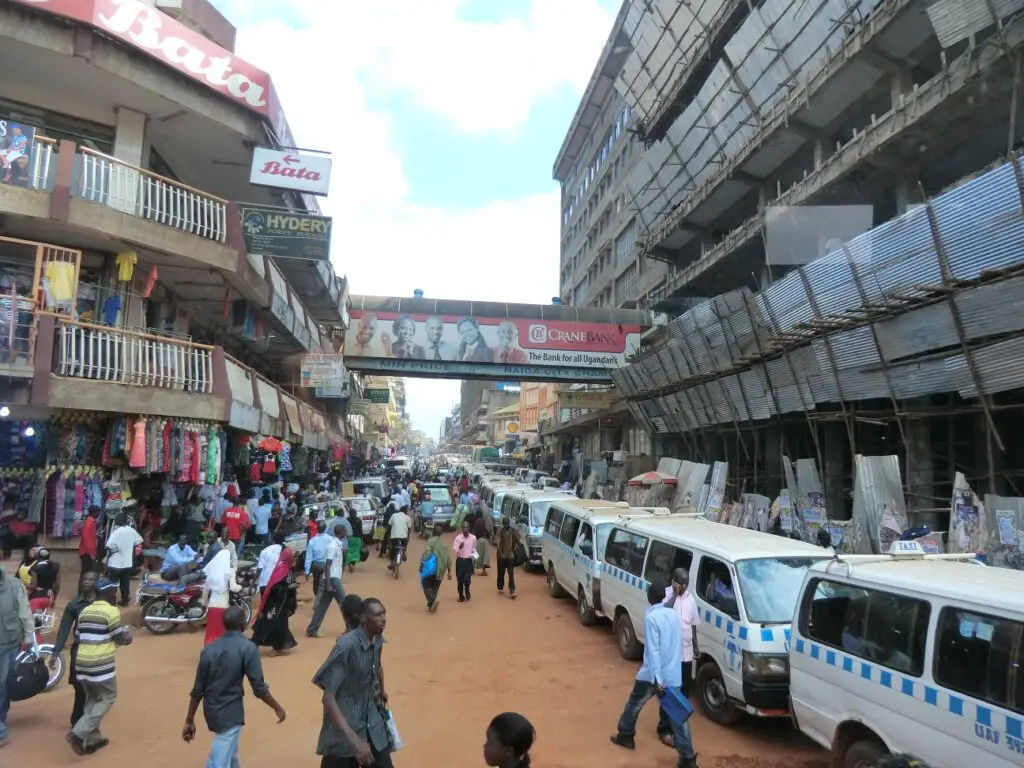
Accommodation: Say Good Riddance Luxury Hotels
Yes, I know – these 5-star resorts on the Maldives you constantly see in your Instagram Feed look like paradise, but do you really want to pay 500$ a night just to have a roof over your head? Look at it this way: Travel is all about exploring, but how likely is it that you would want to leave your hotel if you paid that much for your room (and had more amenities than you‘d be able to use in a month)?
Honestly, I always look for the cheapest places to stay at, as I really only use them to shower, sleep and store my stuff. I hear you if you don’t want to share a dorm with 9 snoring strangers, but in many cases, hostels also have cheap private rooms (usually with shared bathrooms), that are much more affordable than hotel rooms of the same quality.
Couchsurfing is something else I love to do – not only because cutting hotel costs makes your travels much more affordable, but because it allows you to make new friends, while getting a unique glimpse into your destination from a local’s POV. I’ve used Couchsurfing in plenty of destinations, from Prague to Siberia to Uganda and only ever had positive experiences. Just make sure, you actually spend time with your host and don’t treat them as a glorified guest house.

Food: Street Food Instead of Haute Cuisine
We’re all aware that grabbing meals at restaurants three times a day can quickly eat into your budget (pun may be intended). I like to cut costs by doing self-catering whenever possible (which is usually when I’m doing Couchsurfing or staying at an AirBnB, although a lot of hostels also have communal cooking spaces).
If that’s not an option and you don’t feel like bringing out your camping stove in your hotel room, try some street food. Not only is it cheaper than a meal at a restaurant, but servings are smaller, so you’ll be able to try so many more different specialties.
Night markets with lots of street food stalls are ubiquitous in some regions of the world (like South East Asia, for instance), but even in Europe and North America, food vans are becoming increasingly more popular and form an affordable alternative to a sit-down meal. Also, you don’t have to spend long times sitting in a restaurant and instead can use your precious time to do more exploring.
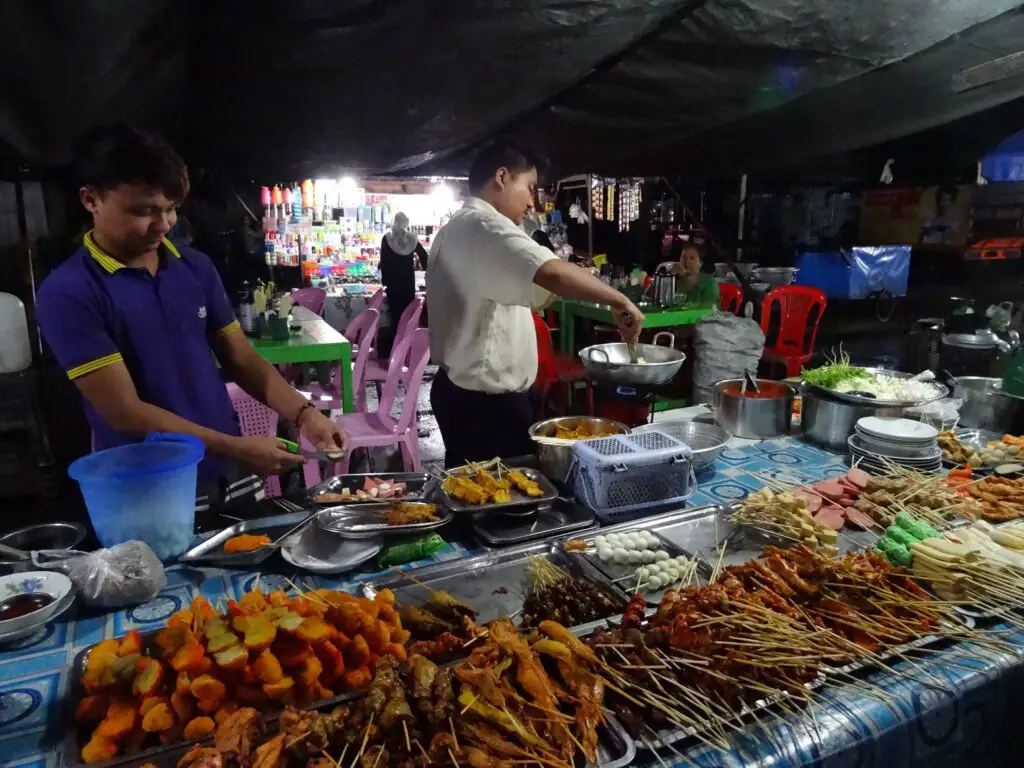
Transportation: Adventure over Comfort
One of the biggest cost factors when traveling is renting a car and while the added freedom to explore sights at your own pace can be alluring, a lot of times places can easily be reached by public transport for a fraction of the price.
This usually boils down to your main limiting factor (i.e. time or money). Yes, taking a bus, train or shared taxi usually takes longer than driving to a destination yourself, but if I’m not on a super tight schedule, I definitely prefer it, and I’ve encountered all kinds of interesting people squeezed in overcrowded buses from Myanmar to Peru.
If you want to reach places that aren’t served by public transport, hitch-hiking is always an option and another great way to meet locals or to enjoy the sensation of riding down the highway in the open back of a pickup-truck (with or without crates of livestock to keep you company).
Also you’ll have so many more stories to tell afterwards. If I had rented a car, I never would have seen two guys fixing the engine of a minibus in Uganda by squeezing a banana in some random opening or witnessed the driver of our overfull taxi sitting in someone else’s lap while driving. These are the stories that stick in your mind, even years afterwards.
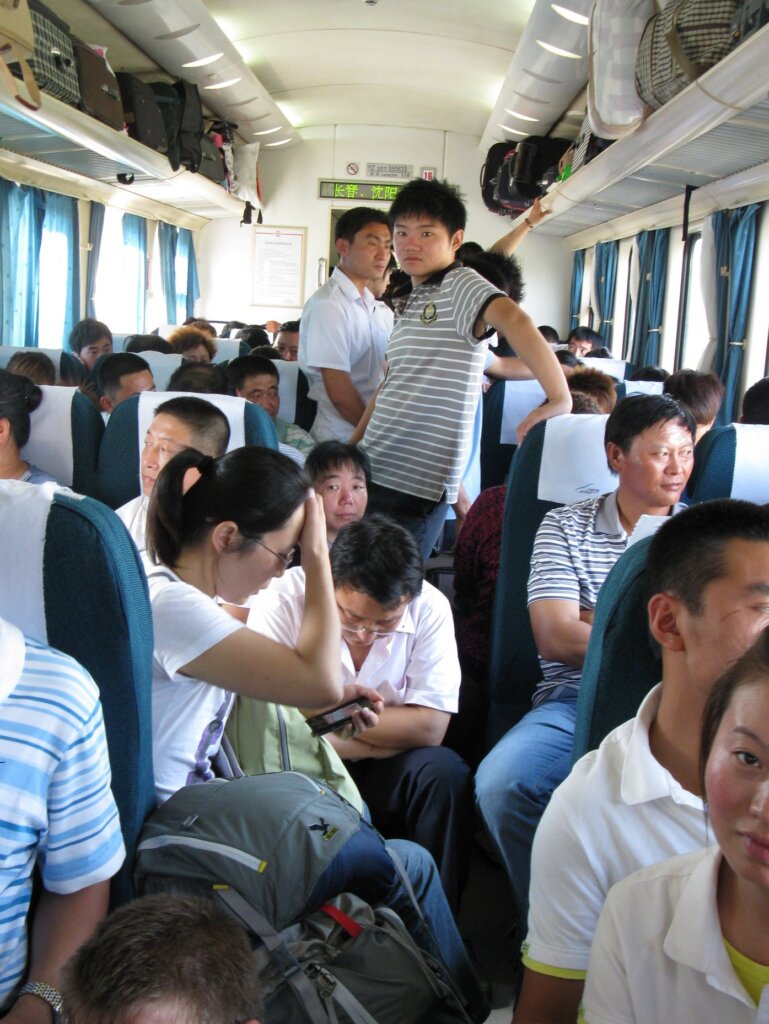
Saving Money on Rental Cars
If you absolutely need to have transport of your own, I’ve found that organizing your rental car (or motorcycle) locally is usually a lot cheaper than pre-booking it online, especially if you avoid big international chain companies (just make sure to still get insurance or at the least document your vehicle beforehand, so no one tries to scam you).
Even better: ask around at the place you’re staying at, and people might find a cheaper set of wheels for you. When we explored the Faroe Islands, we avoided getting an official rental car (about 100$ a day), but instead borrowed an old used car from a hostel we were staying at for 15$ a day.
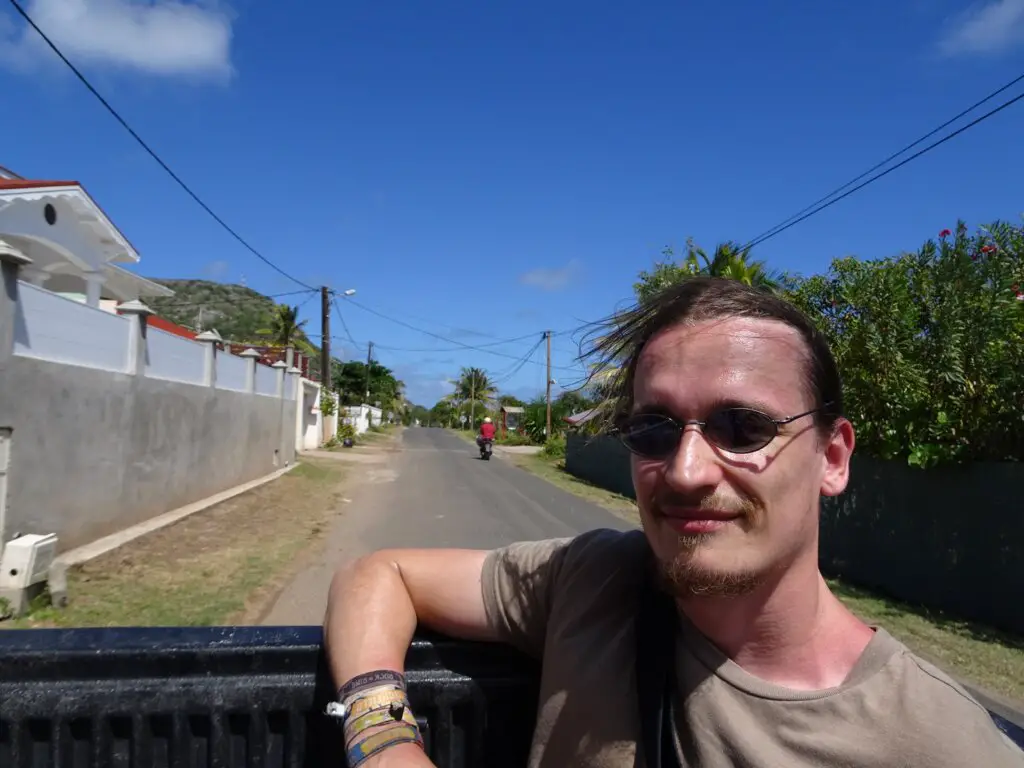
Seasonality: Pick the Right Travel Time
Let’s face it: Some destinations are just much more expensive than others and you won’t be able to travel around Iceland or Japan on the same daily budget as in Thailand or Cambodia, no matter how much you pinch your pennies.
Fortunately, every destination has high and low seasons – travel in early spring or late fall instead of the summer and choose the beginning or end of the rainy season instead of the height of the dry season and you won’t only see flight, hotel and restaurant prices plummet, but you’ll be able to enjoy your destination without tons of other travelers around.

In Conclusion
These are just a few of the ways I tend to cut costs while traveling. As you can see, none of them are super unique – just maybe a little different from the way Social Media tends to depicts travel, but with a little flexibility, it’s still very possible to explore the world on a budget.
In my opinion, it’s all about changing your mindset and seeing traveling cheaply not as a necessary evil that takes away from your experience, but rather something that can add a lot of value, by making your trips so much more adventurous and real.
Also, review some related content on this site regarding saving costs while traveling, night markets, and transportation.


